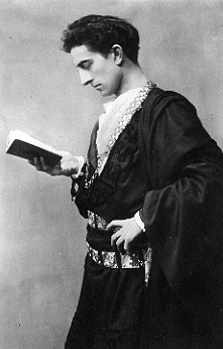SOMETHING IS ROTTEN IN THE STATE OF DENMARK

(source)
"To be, or not to be...so that's the question?"
===

(source)
"To be, or not to be...so that's the question?"
===
Angels and ministers of grace preserve us!
What ho!
This is madness; be there method in it?
Quite so. In my bid to give everything real-life precedent like I did with King Arthur and Titus Andronicus, I've decided to tackle the most well-known of Shakespeare's plays.
...The Merry Wives of Windsor?
Obtuseness, thy name is alter ego!
What shall you write, my lord?
Words, words, words.
More matter, with less art.
Oh, very well. Hamlet (and Ur-Hamlet, if you believe in that hypothesis) is based on the tale of Amleth (lit. Fool), where the son of a murdered king to whom his mother quickly weds feigns madness, stabs a spy through a curtain and arranges the death of two retainers who intended to do him in. This clearly was a well-known legend by the 13th century.
The history of the Danish kings is pretty well-established starting from Gorm the Old, with the last dynasty before that, the House of Olaf, remaining semi-legendary and only attested through inscriptions on runestones. Of the known kings, you have Olof the Brash, who was succeeded by his two sons Gnupa and Gyrd, who, after subjugating Norway, were in turn succeeded by the short-lived Sigtrygg. Sigtrygg reigned briefly before being overthrown by Harthacnut I, son of the deposed Sweyn of Norway.
Given how many happy coincidences there are between the House of Olaf and the events of Hamlet, I couldn't resist. A narrative TL would probably just repeat the play, and Wikiboxes can only tell so much, hence this bizarre fusion of the two. Satisfied?
Speak the speech, I pray you.
Let us sit on the ground, and tell sad stories about the death of kings.
Peace! Count the clock.
The clock hath stricken twelve. We shall have the day to finish this, from when I next speak.
What ho!
This is madness; be there method in it?
Quite so. In my bid to give everything real-life precedent like I did with King Arthur and Titus Andronicus, I've decided to tackle the most well-known of Shakespeare's plays.
...The Merry Wives of Windsor?
Obtuseness, thy name is alter ego!
What shall you write, my lord?
Words, words, words.
More matter, with less art.
Oh, very well. Hamlet (and Ur-Hamlet, if you believe in that hypothesis) is based on the tale of Amleth (lit. Fool), where the son of a murdered king to whom his mother quickly weds feigns madness, stabs a spy through a curtain and arranges the death of two retainers who intended to do him in. This clearly was a well-known legend by the 13th century.
The history of the Danish kings is pretty well-established starting from Gorm the Old, with the last dynasty before that, the House of Olaf, remaining semi-legendary and only attested through inscriptions on runestones. Of the known kings, you have Olof the Brash, who was succeeded by his two sons Gnupa and Gyrd, who, after subjugating Norway, were in turn succeeded by the short-lived Sigtrygg. Sigtrygg reigned briefly before being overthrown by Harthacnut I, son of the deposed Sweyn of Norway.
Given how many happy coincidences there are between the House of Olaf and the events of Hamlet, I couldn't resist. A narrative TL would probably just repeat the play, and Wikiboxes can only tell so much, hence this bizarre fusion of the two. Satisfied?
Speak the speech, I pray you.
Let us sit on the ground, and tell sad stories about the death of kings.
Peace! Count the clock.
The clock hath stricken twelve. We shall have the day to finish this, from when I next speak.












